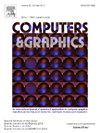虚拟现实中节奏刺激和时间体验的心理生理学
IF 2.5
4区 计算机科学
Q2 COMPUTER SCIENCE, SOFTWARE ENGINEERING
引用次数: 0
摘要
时间体验是人们感知任何真实或虚拟环境的重要组成部分。在本文中,我们从虚拟环境设计的角度出发,探讨了节奏刺激如何影响一项无关的认知任务,即虚拟现实中的时间体验和表现。本研究明确包含生理数据,以调查总体体验如何与心理生理观察结果相关联。这项任务涉及按照形状对三维物体进行分类,在不同的试验中,节奏刺激的节奏和感官通道(听觉和/或视觉)各不相同,以收集时间估计和判断的主观测量结果。结果表明,不同的情境(如用户疲劳和重复试验)对时间体验和性能有不同的影响。根据情境的不同,可以观察到音频刺激对任务执行的积极影响或视觉刺激对任务执行的消极影响,以及与任务熟悉程度有关的节奏对时间估计不足的影响。不过,有些影响是一致的,与情境无关,例如额外刺激会使时间流逝得更快,或者参与者的表现与时间体验之间存在一致的相关性,这表明与流动有关。我们还观察到时间体验与眼动跟踪数据和体温之间的相关性,但其中一些相关性可能是由于疲劳的干扰效应造成的。如果证实与疲劳无关,这些生理数据可用作评估用户时间体验的参考点。这可能对虚拟环境的设计具有重大意义,因为有目的的刺激会强烈影响任务执行和时间体验,而这两者都是虚拟环境用户体验的重要组成部分。本文章由计算机程序翻译,如有差异,请以英文原文为准。
Psychophysiology of rhythmic stimuli and time experience in virtual reality
Time experience is an essential part of one’s perception of any environment, real or virtual. In this article, from a virtual environment design perspective, we explore how rhythmic stimuli can influence an unrelated cognitive task regarding time experience and performance in virtual reality. This study explicitly includes physiological data to investigate how, overall, experience correlates with psychophysiological observations. The task involves sorting 3D objects by shape, with varying rhythmic stimuli in terms of their tempo and sensory channel (auditory and/or visual) in different trials, to collect subjective measures of time estimation and judgment. The results indicate different effects on time experience and performance depending on the context, such as user fatigue and trial repetition. Depending on the context, a positive impact of audio stimuli or a negative impact of visual stimuli on task performance can be observed, as well as time being underestimated concerning tempo in relation to task familiarity. However, some effects are consistent regardless of context, such as time being judged to pass faster with additional stimuli or consistent correlations between participants’ performance and time experience, suggesting flow-related aspects. We also observe correlations between time experience with eye-tracking data and body temperature, yet some of these correlations may be due to a confounding effect of fatigue. If confirmed as separate from fatigue, these physiological data could be used as reference point for evaluating a user’s time experience. This might be of great interest for designing virtual environments, as purposeful stimuli can strongly influence task performance and time experience, both essential components of virtual environment user experience.
求助全文
通过发布文献求助,成功后即可免费获取论文全文。
去求助
来源期刊

Computers & Graphics-Uk
工程技术-计算机:软件工程
CiteScore
5.30
自引率
12.00%
发文量
173
审稿时长
38 days
期刊介绍:
Computers & Graphics is dedicated to disseminate information on research and applications of computer graphics (CG) techniques. The journal encourages articles on:
1. Research and applications of interactive computer graphics. We are particularly interested in novel interaction techniques and applications of CG to problem domains.
2. State-of-the-art papers on late-breaking, cutting-edge research on CG.
3. Information on innovative uses of graphics principles and technologies.
4. Tutorial papers on both teaching CG principles and innovative uses of CG in education.
 求助内容:
求助内容: 应助结果提醒方式:
应助结果提醒方式:


